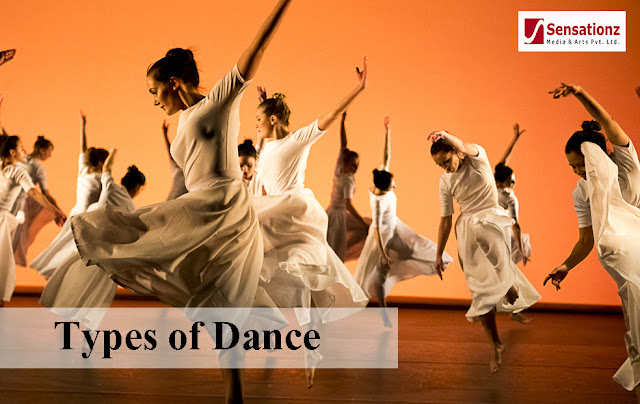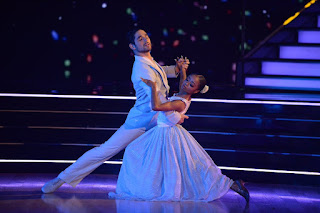Types of Dance
Types of Dance
HIP HOP Dance
Hip Hop Dance is a style of movement characterized via bounces and rocks, carried out to Hip Hop music. It has deep historical and social roots in African American culture, having emerged in Black communities residing in Nineteen Seventies New York. While often referred to as a singular dance style, Hip Hop dance is part of a whole culture of Hip Hop, that includes Deejaying, Graffiti, Emceeing, and Breaking.
Deejaying
Also regarded as turntabling, this is an art shape in which a song is made in real-time with the usage of file players and DJ mixers. DJs in the Hip Hop community are accountable for creating/curating the tune that gets people on the dance floor at parties.
Emceeing
MC stands for “Master of Ceremonies” and they’re essentially the hype-man of the DJ! The MC gets the crowd going and will every so often freestyle rap over the music.
Graffiti
This is the art of expressing oneself about everyday life and the usage of spray paint on walls/outdoor spaces.
Breaking
Breaking (often referred to as breakdancing by means of famous media) is the authentic dance fashion that got here out of the Hip Hop community. It began out with these 5 core movements: Top Rocks, Fast Footwork, Back Rocks, Freezes, and Power Moves.
Knowledge
This factor is the thread that weaves all the different factors together. “Knowledge of self” refers to the Afro-diasporic mix of spiritual and political attention designed to empower contributors of oppressed businesses via portraying social change and giving back to the minority communities.
While some OG participants of the Hip Hop neighborhood consider other elements to be part of Hip Hop’s core (such as Beatboxing) all agree – that you need to take part in the 5 elements above to be considered a member of authentic Hip Hop culture.
JAZZ Dance
Jazz dance, and dance to jazz accompaniments, is composed of a profusion of forms. Jazz dance paralleled the start and unfolding of jazz itself from its roots in Black American society and was as soon as popularized in ballrooms through the capacity of the massive bands of the swing era (the 1930s and ’40s). It radically altered the style of American and European stage and social dance in the twentieth century. The time period is now and again used increased narrowly to describe
1. Famous stage dance (except tap dance) and
2. Jazz-derived or jazz-influenced varieties of modern dance.
It excludes social dances missing jazz accompaniment—e.g., the rumba and one-of-a-kind Latin-American dances.
Jazz dance developed from every 19th- and 20th-century stage dance and regular Black social dances and their white ballroom offshoots. On the stage, minstrel show performers in the nineteenth century developed tap dancing from a mixture of Irish jigging, English clog dancing, and African rhythmic stamping. Tap dance and such social dances as the cakewalk and shuffle became popular vaudeville acts and appeared in Broadway revues and musical comedies as this replaced vaudeville early in the twentieth century. In addition, comedy, specialty, and persona dances to jazz rhythms grew to be general stage routines. By the Forties, factors of jazz dance had appeared in current dance and in motion picture choreography.
Freestyle Dance
Freestyle is a way of dancing in which the dancer improvises his/her moves on the spot, as he dances, alternatively of having them deliberate formerly (ie choreography).
In its most immoderate form, it is the very opposite of choreography, however, it can be argued that such an immoderate stage can in no way be reached, as we all to some diploma diagram our moves beforehand. To provide an example, one may additionally put on a piece of tune and start freestyle dancing to it, but having heard the piece before, and having practiced exquisite moves earlier, one can in no way 100% freestyle to it. This can be seen in many freestyle dance competitions the place dancers, although ostensibly freestyle dancing, nevertheless feature trademark strikes or sequences they've practiced earlier.
Not to be confused with All-Style dancing, in which distinctive dance patterns are mixed.
Contemporary
Contemporary dance is a fashion of expressive dance that combines elements of various dance genres including modern, jazz, lyrical, and classical ballet. Contemporary dancers strive to join the idea and the body via fluid dance movements.
Contemporary dance stresses versatility and improvisation, in contrast to the strict, structured nature of ballet. Contemporary dancers focus on floorwork, the usage of gravity to pull them down to the floor. This dance genre is frequently achieved in bare feet. Contemporary dance can be performed in many one-of-a-kind styles of music. Dance can be conceived as a new way of wondering about dance today, a structure of expression via movement that processes memory, trip, and imagination.
Indian Fusion
Indian Fusion Dance is an expression that is most difficult and is one of the most admired art forms in the country. The fusion dance trend used to be created as a structure that is adaptable to exclusive varieties of music, different matters, and unique moods. The trend commenced supplying higher scope for a man or female creativity, spontaneity, and experimentation. Indian Fusion Dance for this reason grew to be well many times taking place all over u. s . a . seeing that its advent. Indian Fusion Dance is comparatively a new wonder and it has seeped into quite a few different nation-states of performing arts such as song and theatre.
Fusion is an improvised dancing to any style of tune that no longer has a strictly defined dancing style. Depending on the tune and the dancers, fusion can suggest creating a new dance fashion to special music, or combining two or extra setup dance aesthetics into a single dance to mirror the sound of a tune combining greater than one influence. By discovering the commonalities between more than a few dance styles, or creating new movements, dancers can actively adapt and improvise their dance style to songs of all influences.
Ballroom Dance
A ballroom or ball hall is a large room inside a building whose primary purpose is to hold large formal parties called a ball. Traditionally, most balls were held in individual residences; many mansions and palaces, especially historic mansions and palaces, contain one or more ballrooms. In other large homes, a large room such as the main drawing room, long gallery, or hall can double as a ballroom, but a good ballroom must have the right type of flooring, such as hardwood floors or stone floors (usually marble or stone) [citation needed] In later times the term ballroom has been used to describe nightclubs, where customers dance, for example in the United Kingdom top-ranked suites, are often also referred to as ballrooms. Is. The phrase "having a ball" has evolved to include many events where individuals are not just dancing, or having fun.
Ballrooms are usually quite large and may have higher ceilings than other rooms in the same building. A large amount of space for dancing, as well as overly formal vocals, have given rise to ballroom dancing. The largest balls are now almost always kept in public buildings, and many hotels have a ballroom. They are designed extensively to help the orchestra's sound be well carried throughout the room.







.png)
Comments
Post a Comment